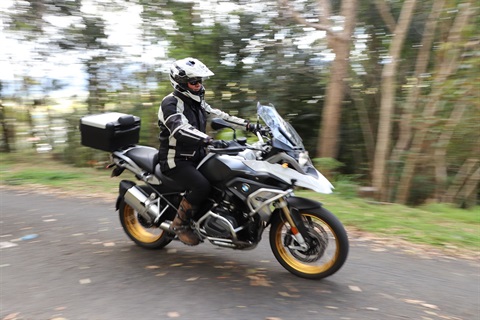Motorcycle safety

The Tweed’s scenic routes attract many motorcyclists, but this also means a higher risk of crashes.
Motorcyclists are some of the most vulnerable road users, accounting for a disproportionately high number of serious crashes despite making up only a small percentage of registered vehicles.
Motorcycle campaign
 Each October, Motorcycle Awareness Month highlights the importance of sharing the road safely and staying alert—especially when it comes to looking out for riders.
Each October, Motorcycle Awareness Month highlights the importance of sharing the road safely and staying alert—especially when it comes to looking out for riders.
In October 2024, we proudly launched our first Joe Rider campaign to raise awareness among drivers and reduce SMIDSY (Sorry Mate, I Didn’t See You) crashes – those caused when motorists fail to see motorcyclists before turning or merging.
The campaign featured the Spot Joe Rider competition, where local volunteers wore high-visibility vests with "I Am Joe Rider" printed on the back while riding through the Tweed. Residents were encouraged to spot them, helping build public awareness and encouraging all road users to be more mindful of motorcycles.
Thanks to strong community interest and positive feedback, planning is now underway for the 2025 Joe Rider campaign. We’ll be calling on local riders to get involved again and continue the push for safer roads.
Key facts
- Motorcyclists are overrepresented in road trauma. Motorcycles make up just 3.8% of registered vehicles in NSW but accounted for almost 20%of deaths on NSW roads in 2024. Over the decade 2014-2023, a total of 590 fatalities involved motorcycle riders or their passengers.
- Male riders accounted for 96.7% of fatalities and 92.8% of serious injuries. The age group most affected (45.8% of fatalities and 50.8% of serious injuries) were riders between 30 and 59 years old, with an increase from 2022 to 2023 (from 21 to 24 deaths).
- Young and novice riders (aged 17 to 29) accounted for 31.8% of fatalities and 36.8% of injuries, highlighting their road vulnerability.
- Speed was a contributing factor in 52% of motorcycle fatalities and 30% of serious injuries. In 60% of these crashes, the rider was travelling below the speed limit, which suggests that riding conditions and lack of awareness may play a role.
- Aboriginal riders represented 10.1% of fatalities and 16.5% of serious injuries, despite being only 3.4% of the NSW population.
- Injuries among culturally and linguistically diverse (CALD) riders were low (under 3%), with the highest percentages of serious injuries found in Indian, Chinese and Arabic communities.
Safety tips
- For motorcyclists:
- Choose the right gear: Wearing proper protective gear makes you twice as likely to avoid hospitalisation after a crash.
- Stay visible: Always assume other drivers haven’t seen you. Use headlights and keep a safe distance.
- Adjust your speed: Ride according to road conditions. Remember, motorcycles take longer to stop than cars.
- Avoid fatigue: Fatigue-related crashes are almost three times more likely to be fatal.
- Maintain your bike: Regular service is key to ensuring your motorcycle is safe to ride.
- For drivers:
- Check blind spots: Always look for motorcyclists, especially before merging or turning.
- Stay mindful of motorcycles: Whether commuting or on a weekend drive, always assume a motorcyclist might be nearby. Even a minor collision can have severe consequences, so stay cautious, especially at intersections.
- Be cautious: Motorcycles are smaller and less visible, so give them extra space and be especially careful at intersections.
Let’s work together to make our roads safer. Take the Towards Zero Motorcycle Safety Quiz today!
 Roads – our commitment to our community
Roads – our commitment to our community
Roads are very important for Council and for our community. Based on past community surveys they are ranked as one of the highest priority services that Council provides.
We’re working hard to build, upgrade and maintain a safe and connected local road network.
Looking after them and prioritising where to spend our road maintenance money is a complicated task and key to good asset management.
To learn more about how we build, upgrade and maintain a safe and connected local road network, including how we prioritise road maintenance projects, visit our Roads Campaign page.